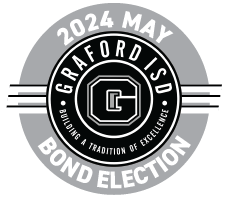
FAQs
GENERAL BOND QUESTIONS
-
School districts are required by state law to ask voters for permission to sell bonds to investors in order to raise the capital dollars required to renovate existing buildings or build a new school. Essentially, it’s permission to take out a loan to build, renovate and pay that loan back over an extended period of time, much like a family takes out a mortgage loan for their home. A school board calls a bond election so voters can decide whether or not they want to pay for proposed facility projects.
-
Yes. Recent research by the Environmental Protection Agency suggests that a school’s physical environment can play a major role in academic performance. Leaky roofs and problems with heating, ventilation and air conditioning systems can trigger a host of health problems – including asthma and allergies – that increase absenteeism and reduce academic performance. Research links key environmental factors to health outcomes and students’ ability to perform.
-
Working with Board of Trustees, teachers and administrators from across the district, the facilities planning committee developed a list of requested items to consider for inclusion in a 2024 bond package. Together, they evaluated current facilities, demographics, equipment, and educational spaces.
-
Without bond money, the district would need to redirect educational funds used for instructional programs and services to fund increased building maintenance costs.
-
The District currently has $6,280,000 of bonds outstanding, including $4,650,000 from the 2013 Bond Program, which is scheduled to be fully repaid by August 2034. The remaining $1,630,000 represents the outstanding principal associated with the refinancing of the 2001 Bond Program and is scheduled to be fully repaid by August 2031.
-
The number of impacted by a project is not directly related to a project’s cost. Instead, the following information is considered before a facility size can be determined: student enrollment projections, existing capacity, condition of existing facilities, Texas Education Agency guidelines/requirements, educational programming (currently and anticipated), and the district’s bonding capacity to determine.
Once a rough program is created general square footages are applied to each space (e.g., administration, classrooms, science lab, library/media center, cafetorium, circulation, etc.) and then a price-per-square-foot budget figure is multiplied by the total area of the potential project. The budget figure is created based on existing project costs with escalation added to ensure that there are enough funds available to complete the project.
-
The previous renovation that included front office addition, kitchen addition, the addition of high school science lab, addition of varsity locker rooms/storm shelter, the addition of bus barn, a new student/staff parking lot, and an athletic complex had a project cost of $7,475,000 associated with it.
-
The estimated interest rate associated with the bonds is 5.0%. However, the District will have the option to refinance or prepay a portion of the bonds prior to maturity.
-
According to UIL regulations, a school must have an enrollment of at least 105 students in grades 9-12 to be classified as a 2A school. Currently, our average enrollment stands at 331 students, with 32 transfers from elementary to secondary. You can find more information about UIL classifications and requirements here.
-
The elementary renovations were removed from the bond package to lower the overall cost and reduce the tax impact. However, the district plans to fund these renovations using money from the fund balance and future Chapter 313 funds, ensuring the renovations will still be completed while lowering the overall tax impact.
TAXES
-
The property taxes of those 65 and older with a homestead exemption would not be affected if the bond referendum passes. Taxes of those receiving the 65 and older homestead exemption are frozen at their present rate for as long as they maintain their homestead.
You must apply for this exemption.
-
A school district’s tax rate is comprised of two components: the Maintenance & Operations tax (M&O) and the Interest & Sinking tax (I&S). The M&O rate is used to operate the school district including salaries, utilities, furniture, supplies, food, gas, etc. The I&S rate is used to pay off school construction bonds. Bond sales only affect the I&S rate.
-
The current bond proposal for $59,950,000 would have a total impact of 3 cents.
-
View the Graford ISD Tax History Chart
-
Revenues received from the collective total of the District’s tax base, including real property (e.g. homes, businesses, land and minerals) and personal property (e.g. business inventory, equipment and mobile homes) are used to support the bond payments. While taxes are “frozen” for those individuals with a qualifying exemption, the District will still receive tax dollars from these individuals up to the frozen amount. Such dollars will be considered part of the tax base from which bond payments will be made.
-
In 2023, Graford ISD had the lowest tax rate when compared to districts in the surrounding area.
Questions about the Graford ISD Bond?
Fill out the form below to have your question forwarded to Graford ISD.


